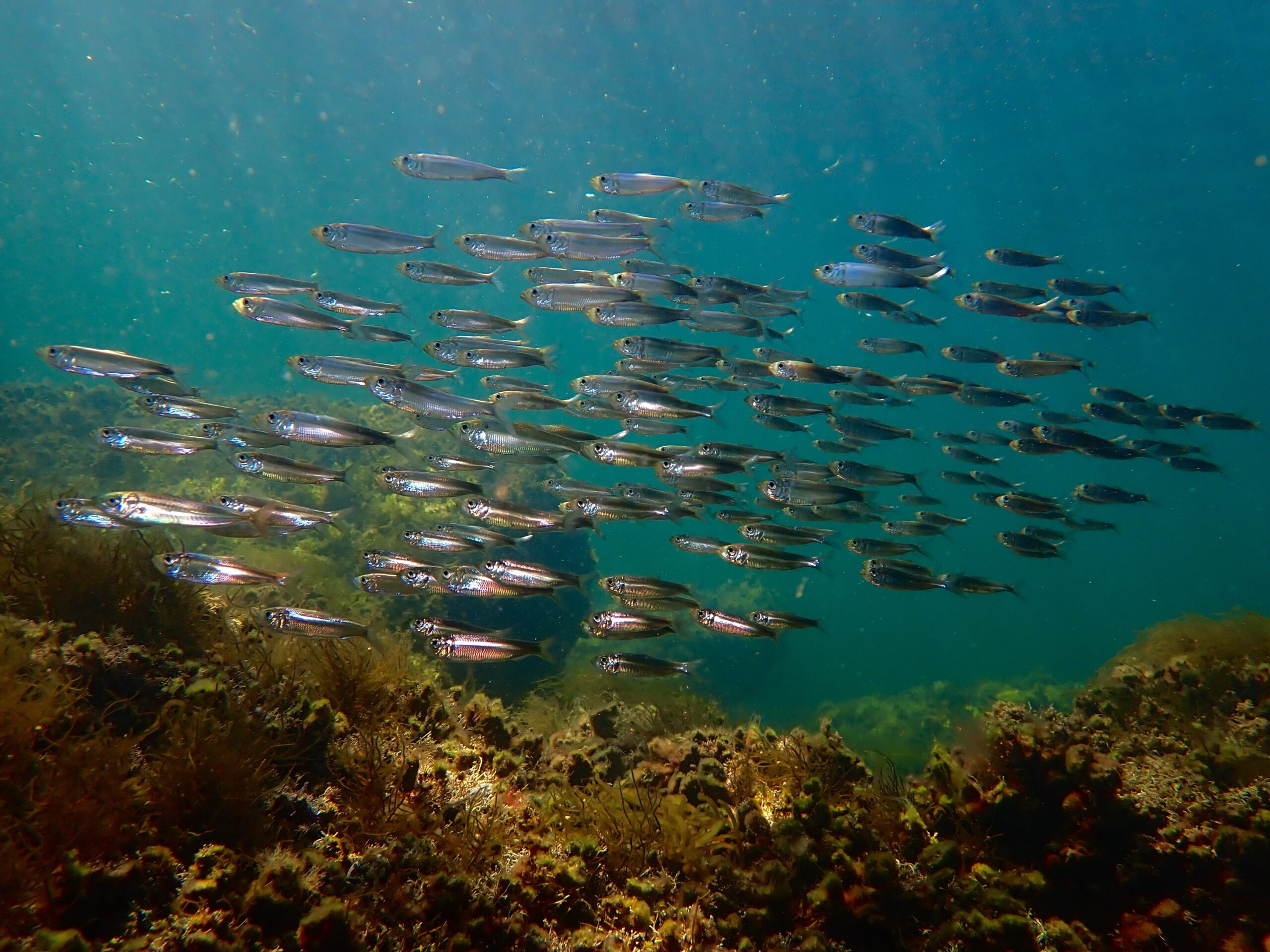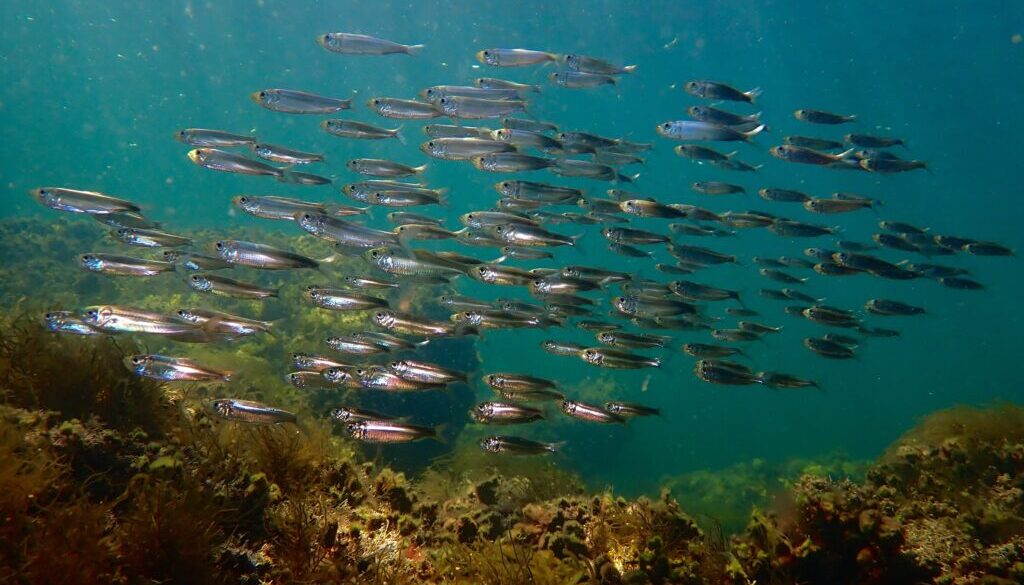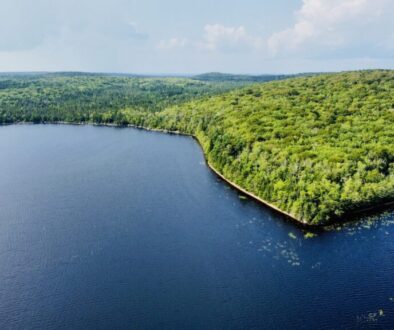High conservation value areas identified in the marine environment off Nova Scotia
KJIPUKTUK / HALIFAX – The Nova Scotia Chapter of the Canadian Parks and Wilderness Society (CPAWS-NS) welcomes today’s public release by Fisheries and Oceans Canada (DFO) of the draft Marine Conservation Network Plan for the Scotian Shelf – Bay of Fundy Bioregion.
This draft plan identifies areas of high importance for conservation within the Scotian Shelf – Bay of Fundy Bioregion, which covers a vast area of ocean estate off the Atlantic Coast of Nova Scotia and the Bay of Fundy. It also sets out a process for public review and feedback.
 Atlantic Herring swim offshore in the Sambro Ledges, an area identified as having high conservation value. Photo: CPAWS-NS
Atlantic Herring swim offshore in the Sambro Ledges, an area identified as having high conservation value. Photo: CPAWS-NS
“Our ocean is important, but it’s in trouble,” says Chris Miller, Executive Director of CPAWS-NS. “The marine environment is stressed by so many different factors, including climate change, pollution, over-exploitation, and incompatible uses such as open-net pen fish farms. It’s important that the federal government has identified these areas of high importance for conservation. We have a responsibility to look after the species and ecosystems that occur there.”
The draft Marine Conservation Network Plan identifies 38 areas of the marine environment of high importance for conservation. These sites include biodiversity hotspots, upwelling zones, habitats for rare and endangered species, concentrations of cold water corals, highly productive coastal ecosystems, kelp beds and tidal salt marshes, spawning grounds, and places important for migratory birds, among other conservation values.
“Our province is surrounded by coastline, and there is no doubt that the ocean plays an important role in the daily lives of Nova Scotians,” says Madie Stewart, Manager of Marine Programs for CPAWS-NS. “The public release of the draft Marine Conservation Network Plan for the Scotian Shelf – Bay of Fundy Bioregion is an important milestone for ensuring ecologically significant species and habitats are protected, while also conserving culturally important activities and our way-of-life on the coast.”
CPAWS-NS has conducted fieldwork in many of the coastal sites identified within the draft Marine Conservation Network Plan. The CPAWS-NS freediving team has been in the water documenting the species and ecosystems and biodiversity that occur at these sites.
“Getting into the water at these coastal sites, swimming with and observing the remarkable species and ecosystems that occur there, gives us such a critical perspective and emphasizes the importance of protecting our ocean,” says Hunter Stevens, Manager of Aquatic and Marine Research at CPAWS-NS. “We are pleased that several areas that we have prioritized for our underwater scientific surveys have been included within the draft Marine Conservation Network Plan”.
The federal government has established a marine conservation target to protect 25% of Canada’s ocean by 2025, and 30% by 2030. This is consistent with the international target of 30% by 2030, which was adopted at the COP15 Biodiversity Conference in Montreal in 2022. At the moment, about 14% of Canada’s ocean is considered protected. Good progress has been made in recent years to increase the amount of marine conservation in Canada, but the 2025 deadline is fast approaching.
“We have a lot of work to do to ensure that the final Marine Conservation Network Plan is robust, that it uses best approaches for marine conservation, and that there is broad public support for protecting our ocean,” says Stewart. “This is the moment to get it right. Future generations are counting on us to be ambitious and to ensure that our ocean is properly looked after.”
Each site contained in the draft Marine Conservation Network Plan must undergo thorough consultations with rightsholders, stakeholders, local communities, and the public before being established. The plan provides a roadmap to guide efforts towards conservation targets. Today’s announcement by DFO is the start of a very long consultation process before any final decisions are made.
CPAWS-NS will be reviewing the draft Marine Conservation Network Plan closely and providing feedback to DFO. The public consultation process runs until June 29th.
Public submissions are encouraged using this online survey:
https://questionnaire.simplesurvey.com/f/s.aspx?s=4ec78a97-ee87-42c3-abd9-ba0297065ece&lang=EN
The draft Marine Conservation Network Plan can be viewed here:
Contact:
Chris Miller: cmiller@cpaws.org
High resolution underwater imagery available upon request


